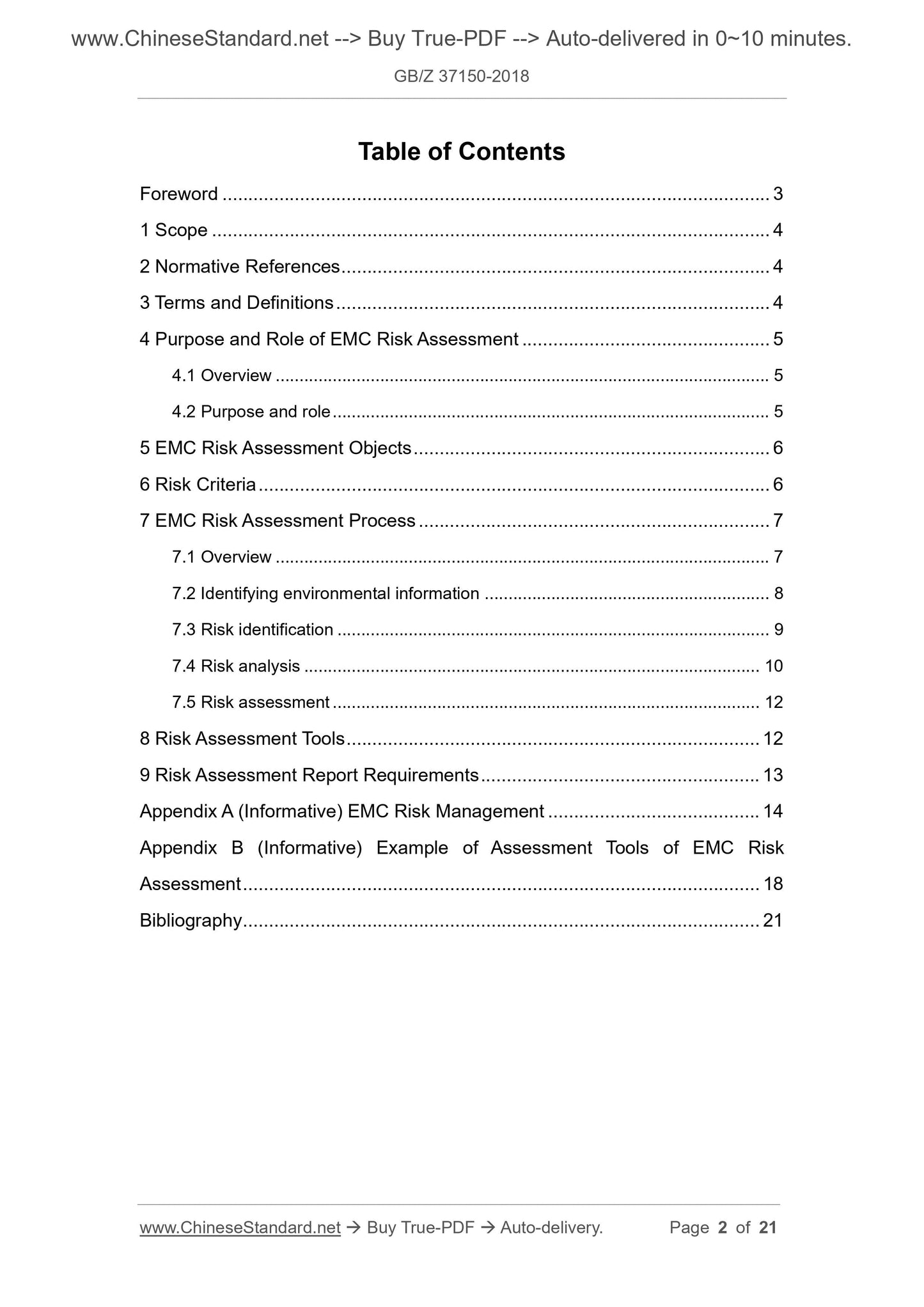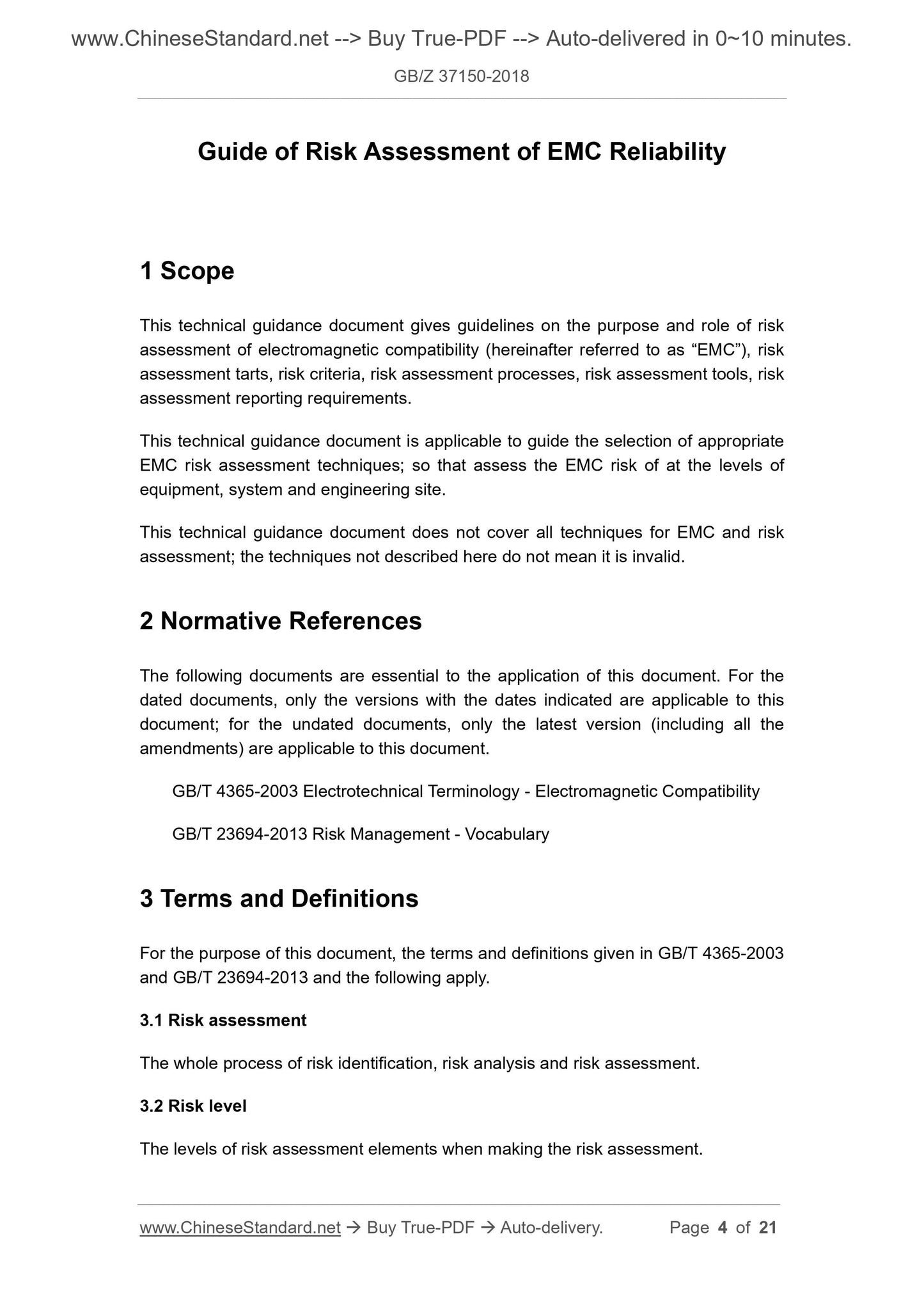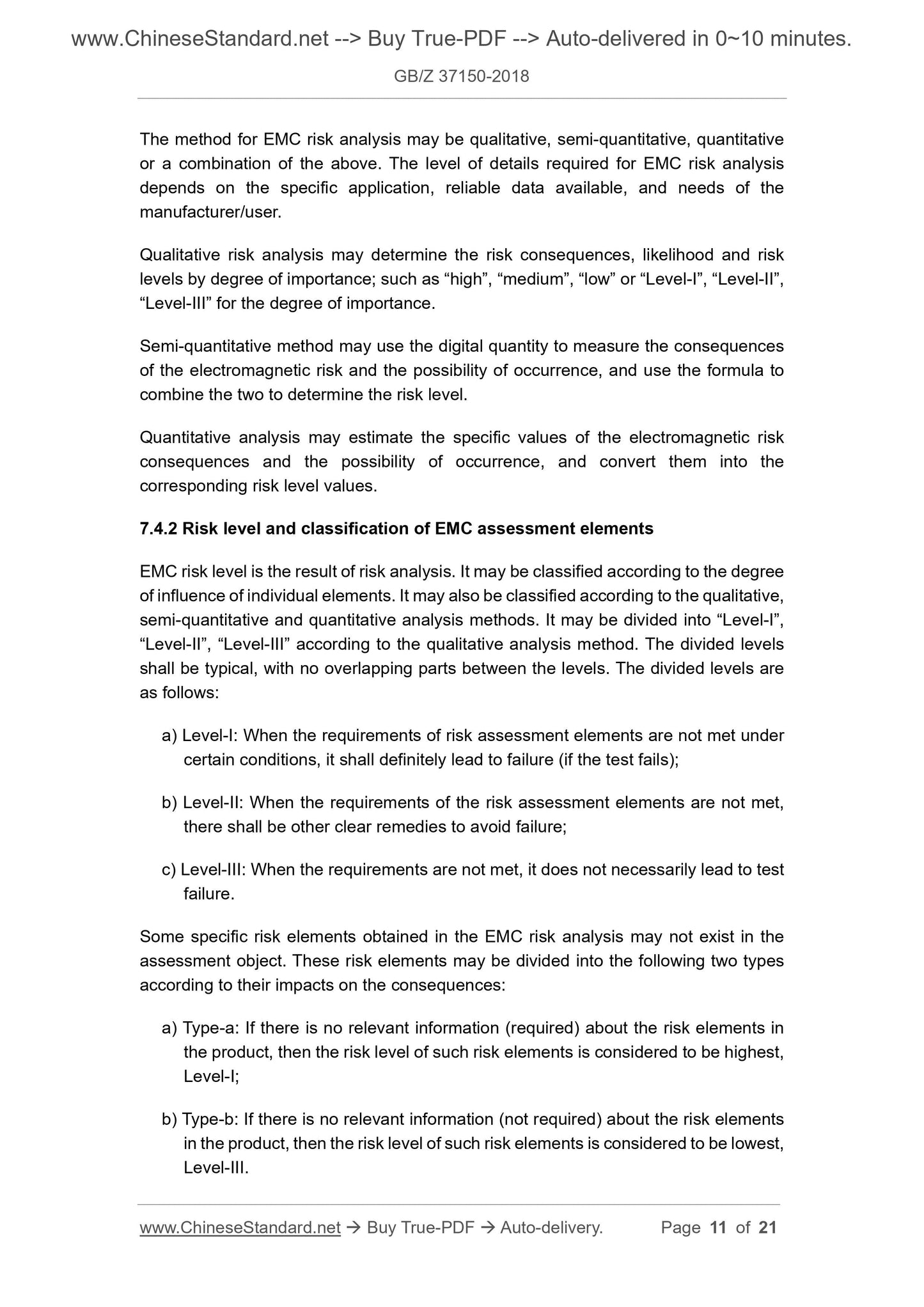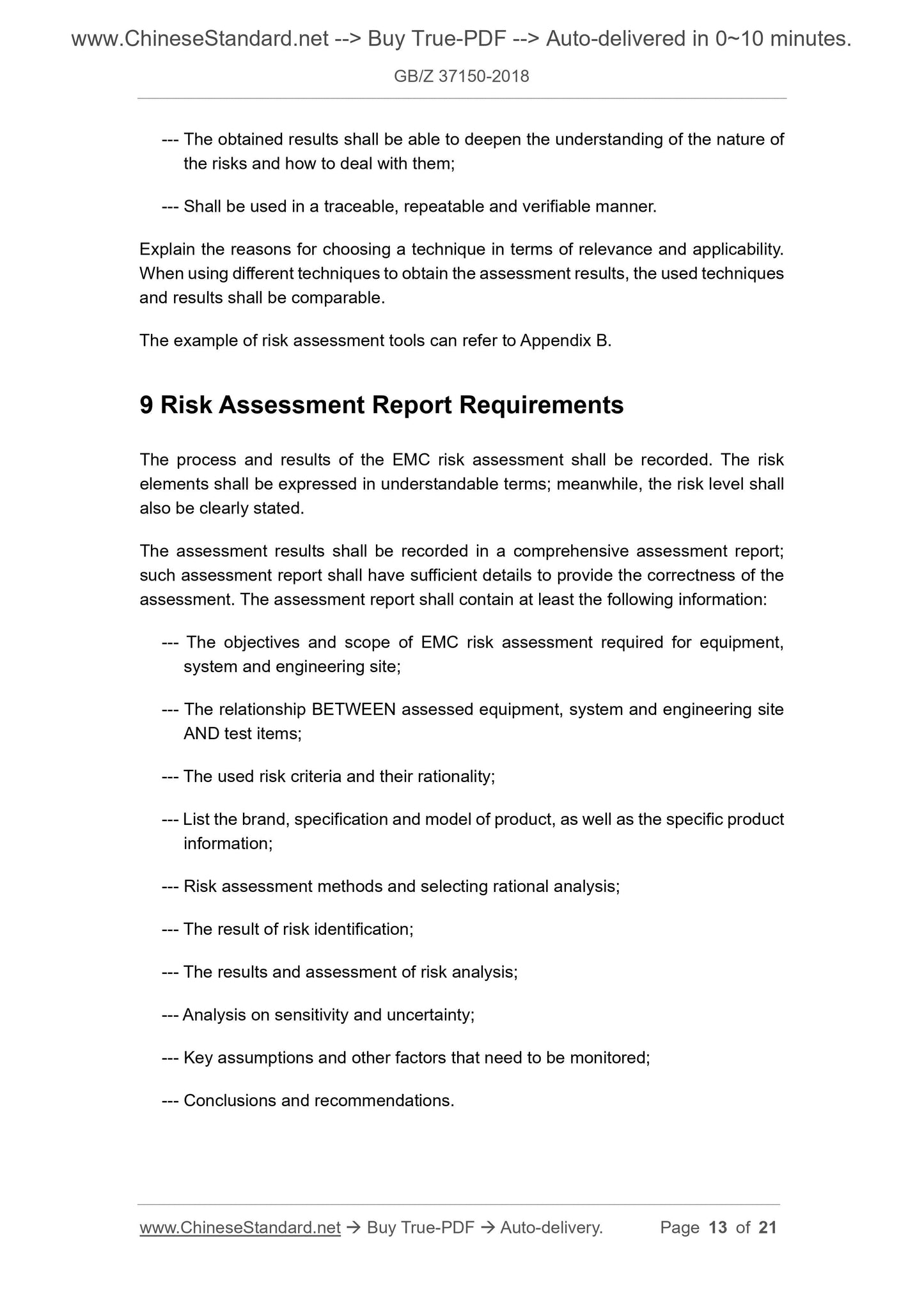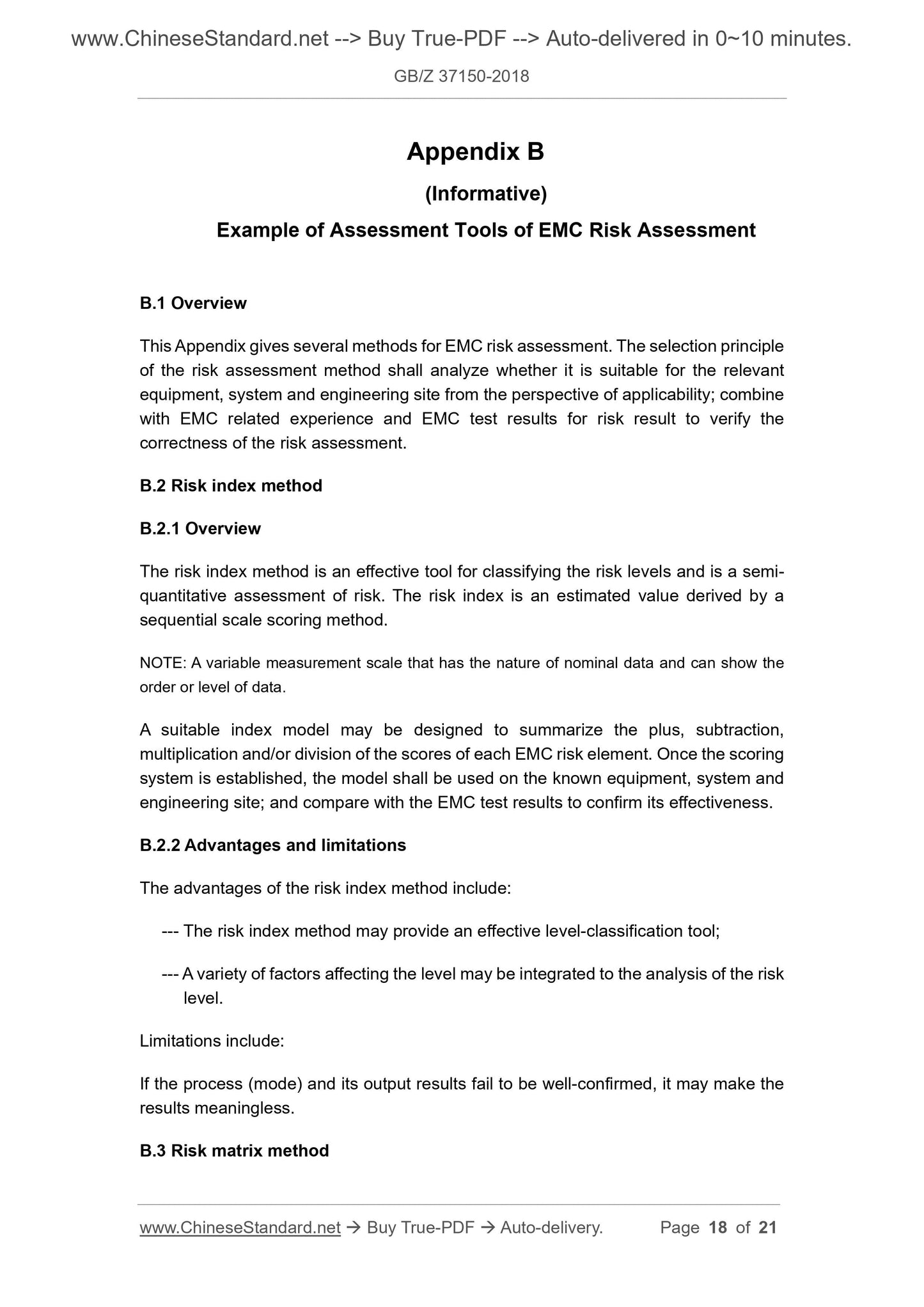1
/
of
8
www.ChineseStandard.us -- Field Test Asia Pte. Ltd.
GB/Z 37150-2018 English PDF (GB/Z37150-2018)
GB/Z 37150-2018 English PDF (GB/Z37150-2018)
Regular price
$150.00
Regular price
Sale price
$150.00
Unit price
/
per
Shipping calculated at checkout.
Couldn't load pickup availability
GB/Z 37150-2018: Guide of Risk Assessment of EMC Reliability
Delivery: 9 seconds. Download (and Email) true-PDF + Invoice.Get Quotation: Click GB/Z 37150-2018 (Self-service in 1-minute)
Newer / historical versions: GB/Z 37150-2018
Preview True-PDF
Scope
This technical guidance document gives guidelines on the purpose and role of riskassessment of electromagnetic compatibility (hereinafter referred to as “EMC”), risk
assessment tarts, risk criteria, risk assessment processes, risk assessment tools, risk
assessment reporting requirements.
This technical guidance document is applicable to guide the selection of appropriate
EMC risk assessment techniques; so that assess the EMC risk of at the levels of
equipment, system and engineering site.
This technical guidance document does not cover all techniques for EMC and risk
assessment; the techniques not described here do not mean it is invalid.
Basic Data
| Standard ID | GB/Z 37150-2018 (GB/Z37150-2018) |
| Description (Translated English) | Guide of Risk Assessment of EMC Reliability |
| Sector / Industry | National Standard |
| Classification of Chinese Standard | L06 |
| Classification of International Standard | 33.100 |
| Word Count Estimation | 15,142 |
| Date of Issue | 2018-12-28 |
| Date of Implementation | 2019-07-01 |
| Regulation (derived from) | National Standard Announcement No. 17 of 2018 |
| Issuing agency(ies) | State Administration for Market Regulation, China National Standardization Administration |
Share

